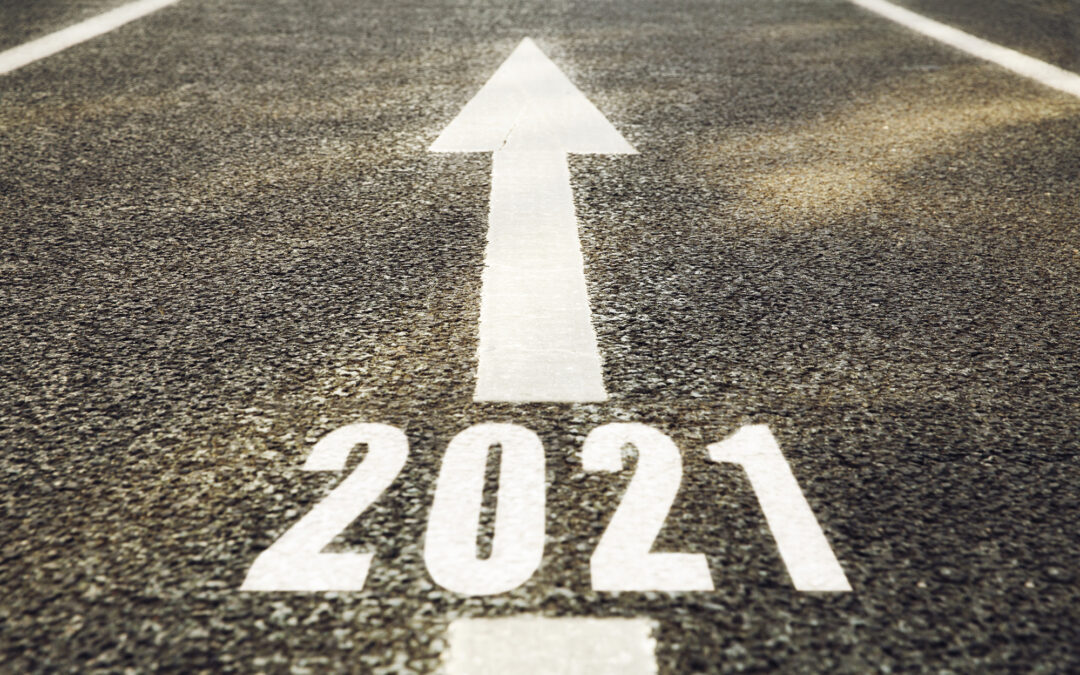2021 will be a year of transition back to a normal way of living. The virus pandemic put the brakes on economies worldwide in 2020 but a fast-tracked vaccine is getting out that is building confidence that the capital markets think will fire things back up. There are good, bad and ugly predictions about what’s in store for 2021. Starting with a job prediction: there could be a 5 million job shortage by the end of 2021.* With normal employment around 158 million, that’s about 3%, which isn’t bad considering where we were in the summer but is off of the pace compared to the last few years.
The big factor negatively affecting job growth and business expansions will be continued social distancing rules. However, as the vaccine circulates throughout the global population, social distancing rules will relax, and we should see a more normal way of interacting by late 2021. GDP is also expected to return to pre-virus levels at the end of 2021.**
When it comes to commercial real estate specifically, look for the southern and tech-focused western states to fair better and recover quicker than other regions of the country. This is because many southern states have opted for keeping their economies more open during the pandemic and the tech-focused areas in the west will benefit because big tech, such as Amazon and Google, have fared extremely well in 2020. Growth in energy-dependent metros will be dampened due to the continued weak demand for oil.
Drilling down to commercial real estate types, office activity, and more specifically, office leasing activity, will NOT return to pre-pandemic levels primarily in the Class A office towers in the urban areas. Companies will be looking to get away from high-rise office buildings opting to move to low-rise office buildings to avoid elevators and common work areas that employees will want to stay away from. Expect more lease renewals versus new leases and shorter lease terms since companies are still cautious about how their work environments will look in the future. From what I am reading and hearing, companies are seeing that some of their workforce perform well from home, while others don’t; therefore, they need more time to figure out the perfect balance.
Sublease space availability continues to increase at a rapid pace and will account for up to 1% of the overall available space sometime in 2021. That is good news for companies looking for space as the supply of available space will increase causing downward pressure on rental rates.
In the industrial sector, expect leasing to continue to remain strong with the demand for space outpacing the ability of developers to build new space. That is because companies are realizing they can’t manufacture or distribute product from their homes. It has to be done at a facility with dock loading, ample power, lighting and high ceilings for racking product. Another factor is companies like Amazon, who, as I mentioned in a previous article, are driving the appetite for logistics space nationwide by occupying over 300 million sq.ft. across the nation; that’s 60% of the net absorption of the total logistics sector.
Finally, the retail sector is expected to report more vacancies in 2021 as more businesses are predicted to close their doors due to restrictions on opening and consumer anxiety over COVID concerns. Malls could account for 1/3 of all the retail space vacancies despite being less than 10% of total retail space inventory. Another likely outcome of the pandemic is to expect retail leases to be shorter in term than the typical 7-to-10-year term retailers usually lock in. That’s due to retailers concerns for the changing buying habits of consumers from brick and mortar to online sales.
Overall, I do think it will be a bumpy 2021 with ups and downs in the economic recovery with an overall upward trajectory. I also think the recovery will be quicker than many expected due to the incredible determination and innovation of American businesses and the governments willingness to cut red tape to enable a warp-speed delivery of the COVID vaccine without sacrificing safety.
*Source: Oxford Economics – Costar Group
**Source: Oxford Economics


Recent Comments